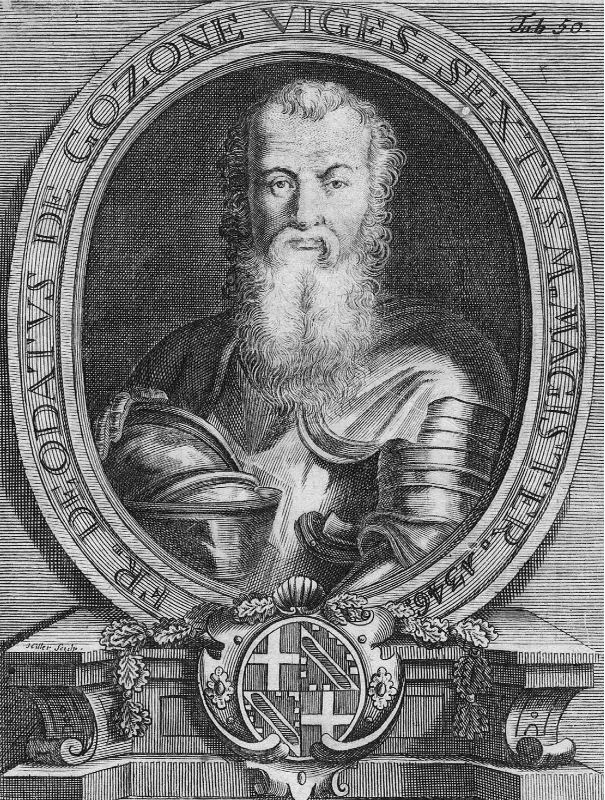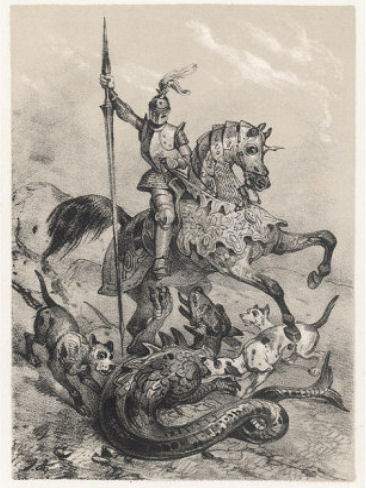Two years after the Knights [of St. John of Jerusalem] had occupied Rhodes a battle took place which was quite unconnected with the Moslem enemy. It has passed, if not into history, at least into legend. A Provençal knight, Dieudonné de Gozon, slew a dragon…
In a valley below Mount St. Stephen, a little south of the city of Rhodes, a dragon had established its lair and, in the manner of its kind, was given to preying upon the peasantry—particularly country maidens. A number of Knights at one time or another had gone out to give battle to the dragon but all had lost their lives, with the result that orders had been issued by the Grand Master that the beast should be left severely alone.  Dieudonné de Gozon, however, was determined to free Rhodes from the menace, and had a model built conforming to the descriptions of the dragon given by those who had seen it. He then trained dogs to attack it, with the intention of killing it himself while it was engaged by the dogs. When he felt that the training period was over, Dieudonné rode out to the valley. He found the dragon in its lair and slew it. For his disobedience he was dismissed from the Order. So great was the public outcry, however, that the Grand Master was forced to reinstate him. Whatever the truth of the story (and it is possible that some large snake or even a Nile crocodile had established itself near a lake in the valley) the existence of Dieudonné de Gozon cannot be doubted. He is ever afterwards referred to in the Order’s archives as “The Dragon-Slayer.” He went on, undoubtedly assisted by his popular fame, to become Grand Master in 1346.
Dieudonné de Gozon, however, was determined to free Rhodes from the menace, and had a model built conforming to the descriptions of the dragon given by those who had seen it. He then trained dogs to attack it, with the intention of killing it himself while it was engaged by the dogs. When he felt that the training period was over, Dieudonné rode out to the valley. He found the dragon in its lair and slew it. For his disobedience he was dismissed from the Order. So great was the public outcry, however, that the Grand Master was forced to reinstate him. Whatever the truth of the story (and it is possible that some large snake or even a Nile crocodile had established itself near a lake in the valley) the existence of Dieudonné de Gozon cannot be doubted. He is ever afterwards referred to in the Order’s archives as “The Dragon-Slayer.” He went on, undoubtedly assisted by his popular fame, to become Grand Master in 1346.
Ernle Bradford, The Shield and the Sword (New York: E. P. Dutton & Co., Inc., 1973), 68.
Short Stories on Honor, Chivalry, and the World of Nobility—no. 260










